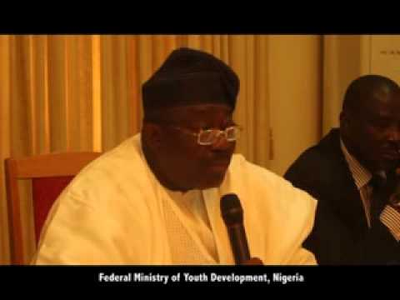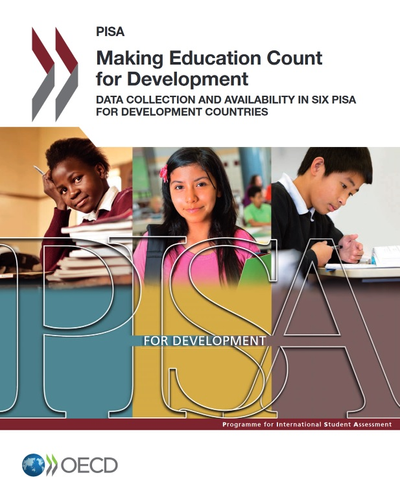Tackling Africa’s Paradox of Growth Without Development
Before and after the global economic crisis, GEC, that was triggered by the collapse of the mortgage subsector in the United States in 2007/08, there was the general euphoria that African economies were able to withstand the crisis partly on account of better macroeconomic management. Nonetheless, the GEC affected African economies differently, depending on the extent of each country’s relationship with developed capitalist countries. The adverse effects of the crisis reversed the increased growth pattern recorded before the crisis. GDP growth in Africa plummeted from 7.1 per cent in 2007 to 2.6 per cent in 2009 and increased to almost 5 per cent after the sluggish global recovery.
In recent times, there is celebration about Africa’s growth trajectory. The “Africa-is-rising” syndrome has become the subject of discussion at most development forums. Multilateral institutions like the World Bank, IMF, and European Union, among others, have argued that the “impressive” growth in Africa is due to robust macroeconomic management and they even predicted positive growth rates up to the year 2017 with marginal revisions from time to time. But what drives Africa’s growth performance? Today, the debate among the contending schools of thought in economics still rests on the degree of direct state involvement in economic activities. Asian Tigers such as India, China, Malaysia, Indonesia, Singapore and other countries have been able to move millions out of poverty by registering not only robust growth rates over a long period of time but also through systematic economic planning gingered by an ‘elite’ group committed to positive structural transformation.
In spite of the so-called positive growth trajectories of African economies, the rate of unemployment is above 25 per cent and rising. The quality of education and health service delivery is nothing to write home about in many African countries. The poverty incidence is almost 60 per cent and rising. In addition, inequality is widening. How relevant are robust macroeconomic management and stability when the progress towards human and social development is extremely slow? According to the Economic Commission for Africa, ECA, “the relatively strong economic performance in Africa since the turn of the 21st century has not resulted in satisfactory social development outcomes. For example, poverty rates have remained high in sub-Saharan Africa and the recent positive growth spells have not transformed into solid employment creation, one of the most important means to reduce poverty.”
It is crucial that growth must generate employment, reduce poverty and provide a reasonable mix of goods and services to a majority of citizens. The growth process ought to guarantee that an economy is transforming or transiting from primary production (reliance on agriculture and extractive industries) to manufacturing (industrialisation) and finally to high quality services-based activities. In almost all African countries, growth has not translated into development. All economies that have leap-frogged from underdevelopment to developed knowledge-based societies have been guided by well thought and executed economic blueprints. In Africa, particularly sub-Sahara Africa, SSA, growth has been driven by high prices of commodity exports, especially in the mining/mineral sector. A good example is Nigeria where the recent decline in oil revenue has thrown up panicky monetary and fiscal measures. No SSA country is industrialised. Manufacturing contributes about 7 per cent to GDP. Only South Africa, to a large extent, has a first world infrastructure. Consequently, the perceived impressive growth performance of African economies has not resulted in development.
If Africa must structurally transform its economy, then the role of the state must go beyond that of providing the enabling environment and correcting for market failure. A development-driven state is one “that puts economic development as the top priority of government policy and is able to design effective instruments to promote such a goal.” The neo-liberal economic framework does not support the concept of a development state but favours the prescription of the Washington consensus. According to the ECA, countries that have succeeded in unleashing high growth rates and social development are not the ones that implemented the prescriptions of the Washington consensus. They are, instead, the states that can invest heavily in hard and soft infrastructure, provide funds for research in all sectors of the economy and chart the future for citizens. The private sector’s major objective is to ensure rising rates of profit.
How impressive is Africa’s growth trajectory? From 2004–08, Sub-Sahara Africa grew by 6.4 per cent on average. However, beginning from 2009, the growth rate started to decline and thus between 2010 and 2013, SSA grew by almost 5 per cent. Judging from the erstwhile growth rates in the 1990s, the positive growth rates appear satisfactory but are they sustainable? Angola, Botswana, Ethiopia, Kenya, Ghana, Zambia and Nigeria appear to be the growth drivers. Despite the fact that the growth trajectory has been sustained for over six years, the worrisome issue is that it has been backed by high commodity prices. Any negative shock in the prices of these commodities would pose a challenge on how development is to be financed. Moreover, growth must be double-digit and sustained for at least 15 years for it to have any positive dent on poverty reduction. Consequently, reliance on an exogenous source of revenue to finance development is unhealthy for African economies.
Economic performance indices show that most of the countries with ‘impressive’ growth rates performed poorly in 2006, 2010 and 2013. Except for Mauritius, both the misery and discomfort indices continue to rise in most of the countries in Africa. The poor economic performances of these countries call into question the robustness of macroeconomic variables and how best the economies are managed. The poor economic performance is fuelled by rising rates of unemployment, high lending rates and poverty. If macroeconomic stability is not in the interest of the majority of citizens then such an economy is performing sub-optimally. Despite the so-called impressive growth, there is no evidence that structural transformation is taking place in Africa, especially in SSA.




